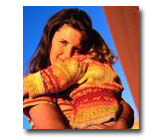
| ||||||
|
Children under age 18 living in poverty in 2004: Poverty rate |
Bring WAM to Your Community
Why?Be inspired by the possibilities WAM can bring your city, region or state! In a time of significant welfare reform, it is now more important than ever for policymakers to have a personal working understanding of the state of public services -- its successes, its failures and needed improvements to support low-income people working toward becoming self-sufficient. Many legislators who create policies have never spoken to a person relying on public assistance, let alone know one. Their decisions are often based on pre-processed information two or more times removed from experience that fails to reflect the realities of life on public assistance. On the other side of the equation, people on public assistance rarely share their experience with their representatives. While public assistance may have been a lifeline, it may have also been a source of embarrassment and condemnation. For this and other reasons, individuals receiving public assistance are even less likely than the general public to communicate with their elected officials. Examples of organizations that have coordinated WAM projects: Community Action Agencies, Hunger Task forces, Women’s Studies Consortium, Big Brothers, Big Sisters, Economic Redevelopment partnerships, youth service organizations and homeless coalitions. |
Total people living in poverty in 2004 in the United States: Poverty rate 13% |
|
Walk a Mile Program Ph: 206-543-3027info@walkamile.org This project is affiliated with the University of Washington School of Social Work |
